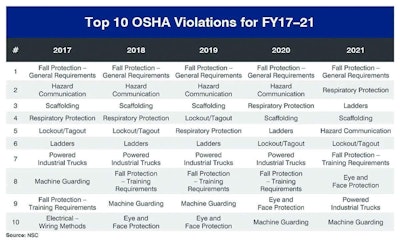OSHA’s Hazard Communication standard has been around since the early 1980s and has had a few updates since then including the 2012 adoption of the global harmonization standard to make handling chemicals easier to understand. Yet, Hazard Communication continues to be a top 10...
How’s Your HazCom Program?
Employees must be trained to understand the hazards they are encountering.
Popular Stories
Discussion
Comments on this site are submitted by users and are not endorsed by nor do they reflect the views or opinions of COLE Publishing, Inc. Comments are moderated before being posted.







